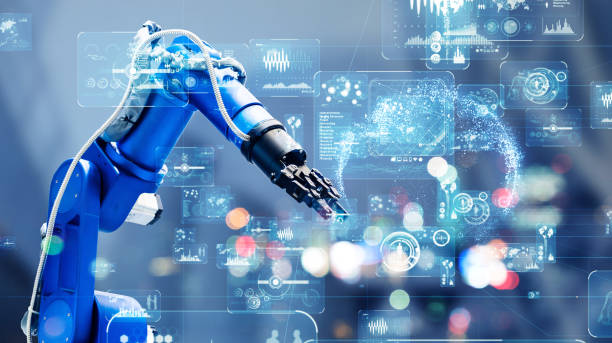New Robot Technology: In-Depth Analysis of Emerging Technologies in Industrial Robotics

In the dynamic world of industrial robotics, new robot technology is revolutionizing manufacturing processes, improving efficiency, and reducing costs. This article aims to analyze emerging technologies in industrial robotics and their potential impact on the industry.
Evolution of Industrial Robotics
Industrial robotics has come a long way since its inception. The journey began in the 1960s with the introduction of the first industrial robot, Unimate, which transformed the automotive manufacturing industry. This marked the beginning of automation in factories, leading to significant increases in productivity and safety.
Over the decades, industrial robotics has undergone several key milestones. The 1980s saw the rise of computer-integrated manufacturing, while the 2000s brought advancements in precision and speed with the development of more sophisticated robotic arms. Today, industrial robots are smarter, more versatile, and more accessible than ever before. They are equipped with advanced sensors, artificial intelligence (AI), and machine learning capabilities, making them indispensable in modern manufacturing.
Emerging Technologies
The landscape of industrial robotics is continually evolving, driven by several emerging technologies. These innovations are pushing the boundaries of what robots can achieve in an industrial setting.

Artificial Intelligence and Machine Learning in Robotics
AI and machine learning are at the forefront of new robot technology. These technologies enable robots to learn from data, adapt to new tasks, and improve their performance over time. For instance, AI-powered robots can now perform complex assembly tasks with greater accuracy and speed than human workers. Machine learning algorithms allow robots to optimize their operations, predict maintenance needs, and reduce downtime, leading to more efficient and cost-effective manufacturing processes.
Advanced Sensing Technologies
Advanced sensing technologies, such as LiDAR, 3D vision systems, and tactile sensors, are enhancing the capabilities of industrial robots. These sensors provide robots with a high level of spatial awareness and precision, enabling them to navigate complex environments, handle delicate materials, and perform intricate tasks. For example, 3D vision systems allow robots to identify and manipulate objects with high accuracy, while tactile sensors enable robots to adjust their grip based on the texture and fragility of the items they are handling.
Human-Robot Collaboration
The concept of human-robot collaboration, or cobots, is gaining traction in the industrial sector. Cobots are designed to work alongside human workers, complementing their skills and increasing overall productivity. Unlike traditional industrial robots, which are often caged off for safety reasons, cobots are equipped with advanced safety features that allow them to operate near humans. This collaboration not only enhances efficiency but also reduces the physical strain on workers by taking over repetitive and physically demanding tasks.
3D Printing and Additive Manufacturing in Robotics
3D printing and additive manufacturing are transforming the way industrial robots are designed and utilized. These technologies enable the production of complex and customized robotic components with unprecedented precision and speed. 3D printing also allows for rapid prototyping and testing of new robot designs, accelerating the development process and reducing costs. Furthermore, additive manufacturing techniques are being used to create lightweight and durable parts, improving the performance and efficiency of industrial robots.
IoT and Robotics
The integration of the Internet of Things (IoT) with robotics is creating smart and interconnected manufacturing environments. IoT-enabled robots can communicate with each other and with other machines in real time, leading to more coordinated and efficient operations. This connectivity allows for better monitoring and control of robotic systems, as well as predictive maintenance and optimization of production processes. IoT technology also facilitates the collection and analysis of vast amounts of data, providing valuable insights for continuous improvement and innovation.

Future Prospects and Trends
The future of industrial robotics looks promising, with new robot technology poised to drive further advancements and reshape the industry. Emerging trends include the development of autonomous mobile robots (AMRs) that can navigate complex environments independently, and the use of blockchain technology to enhance the security and transparency of robotic systems. Additionally, advancements in AI and machine learning are expected to lead to even smarter and more capable robots, capable of performing a wider range of tasks with greater efficiency.
Conclusion
In summary, new robot technology is playing a crucial role in transforming the industrial sector. From AI and machine learning to advanced sensing technologies and IoT, these emerging technologies are enhancing the capabilities of industrial robots and paving the way for a more efficient and innovative future. As these technologies continue to evolve, the impact of industrial robotics is set to grow, driving productivity and competitiveness in manufacturing industries worldwide.
Interested in learning more about innovative robots? Keybotic’s technology helps automate inspections to increase productivity, improve safety, and optimize industrial maintenance — get in touch with us and find out more!



